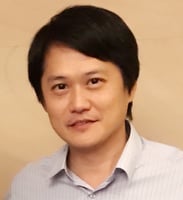Recent Advances in the Synthesis, Characterization and Applications of Functional Nanoparticles and Quantum Dots (Volume II)
A special issue of Nanomaterials (ISSN 2079-4991). This special issue belongs to the section "Nanofabrication and Nanomanufacturing".
Deadline for manuscript submissions: 30 October 2024 | Viewed by 80
Special Issue Editors
Interests: quantum dots; synthesis; inkjet printing; applications
Special Issues, Collections and Topics in MDPI journals
Interests: nanomaterials
Interests: growth, synthesis, and device fabrication of nanomaterials; electron-beam lithography technology; solar cells; display technology
Special Issues, Collections and Topics in MDPI journals
Interests: nanomaterials; nanoparticles; synthesis of nanomaterials; hybrid nanomaterials; nanocomposites; surface engineering; solar cells; photodetectors; photocatalysis; sensors; displays
Special Issues, Collections and Topics in MDPI journals
Special Issue Information
Dear Colleagues,
Functional quantum dots (QDs) and nanoparticles (NPs) continue to be at the forefront of research and innovation, finding applications across various domains such as biomedicine, lighting and displays, energy harvesting, sensing, and environmental remediation. The past decades have witnessed significant advancements in the synthesis, characterization, and application of QDs and NPs, leading to their integration into consumer products. Emerging technologies, such as QD-color-enhanced displays (QLED TV), underscore their impact on everyday life. Additionally, recent advancements in QD light converters for mini-LED or micro-LED technologies highlight their significance in optoelectronics. Building upon the success of previous research endeavors, we are pleased to announce the second volume of a Special Issue dedicated to further exploring the potential of QDs and NPs in practical applications and addressing current challenges and opportunities. This Special Issue aims to showcase cutting-edge research that will advance the understanding and utilization of QDs and NPs in diverse fields.
Scope of the Special Issue:
We invite researchers and scientists to submit original research and review papers on topics related to the synthesis, characterization, and application of QDs and NPs. The Special Issue will cover a wide range of themes, including, but not limited to, the following:
- Novel synthesis methods and characterization techniques for QDs and NPs;
- Engineering of polymer/QD nanocomposites for various applications;
- Fluorescence, optoelectronic properties, carrier transport, and stability of QDs;
- Self-assembly strategies to create functional nanostructures using QDs or NPs;
- Biomedical applications of QDs and NPs in biosensing, imaging, and drug delivery;
- Advancements in lighting and display technologies utilizing QDs and NPs, including OLEDs, QD-OLED, Micro-OLED, EL QLEDs, etc.;
- Harnessing light for energy harvesting, storage, and sensing applications;
- Explorations of new and emerging applications for QDs and NPs;
- Environmental impacts and sustainability in the use of QDs and NPs.
Submission Guidelines:
Authors are invited to submit original research articles or comprehensive review papers that contribute to the advancement of knowledge in the field of functional quantum dots and nanoparticles. All submissions will undergo a rigorous peer-review process to ensure the highest scientific quality and relevance to the theme of the Special Issue.
Manuscripts should be prepared according to the guidelines provided by the journal and submitted online through the journal’s submission system. Please indicate that your submission is intended for “Recent Advances in the Synthesis, Characterization and Applications of Functional Nanoparticles and Quantum Dots (Volume II)” when prompted during the submission process.
Prof. Dr. Hsueh-Shih (Sean) Chen
Prof. Dr. Ping Yang
Dr. Meng-Lin Tsai
Prof. Dr. Katarzyna Matras-Postołek
Guest Editors
Manuscript Submission Information
Manuscripts should be submitted online at www.mdpi.com by registering and logging in to this website. Once you are registered, click here to go to the submission form. Manuscripts can be submitted until the deadline. All submissions that pass pre-check are peer-reviewed. Accepted papers will be published continuously in the journal (as soon as accepted) and will be listed together on the special issue website. Research articles, review articles as well as short communications are invited. For planned papers, a title and short abstract (about 100 words) can be sent to the Editorial Office for announcement on this website.
Submitted manuscripts should not have been published previously, nor be under consideration for publication elsewhere (except conference proceedings papers). All manuscripts are thoroughly refereed through a single-blind peer-review process. A guide for authors and other relevant information for submission of manuscripts is available on the Instructions for Authors page. Nanomaterials is an international peer-reviewed open access semimonthly journal published by MDPI.
Please visit the Instructions for Authors page before submitting a manuscript. The Article Processing Charge (APC) for publication in this open access journal is 2900 CHF (Swiss Francs). Submitted papers should be well formatted and use good English. Authors may use MDPI's English editing service prior to publication or during author revisions.
Keywords
- synthesis and characterization of QDs, polymer/QDs or polymer/NPs nanocomposites
- fluorescence, optoelectronic, carrier transport, stability, and other physical properties
- self-assembly of QDs or NPs to different nanostructures
- biosensing and biomedical applications
- lighting and display applications
- light harvesting, storage, and sensing
- OLEDs and QLEDs
- explorations of new applications for QDs/NPs
- environmental issues of QDs and NPs








